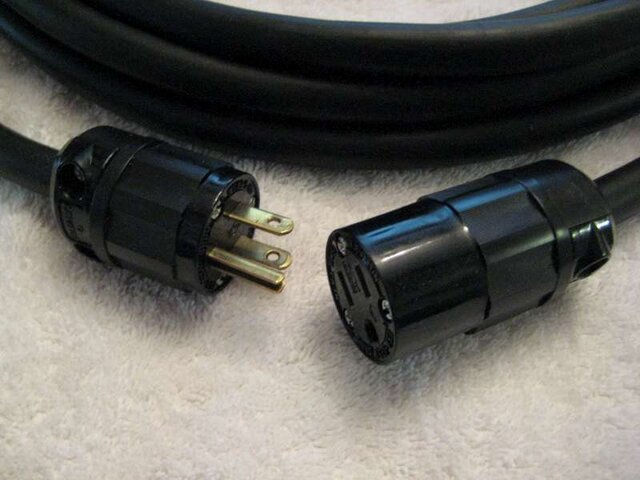Dionysus
Well-Known Member
there are basically 4 'grades' of these connectors. Residential (cheap hardware store junk), commercial (hubbell Valise or leviton Python), industrial (fed spec) (5266 / 5269 types), and hospital (are avaialble in hospital grade commercial type and hospital grade version of the industrial grade type). There are also some other types such as corrosion resistant which dont really come into play here.
The differences between industrial grade and hospital grade are minor, mainly corrosion resistance and contact retention. You *may* notice a difference in the female after a few years use, but for the most part hospital grade doesnt warrant the increased cost for our industry.
With regard to what 5-15 and 5-20 can be used where, here is what is code allows:
15a cir:
-single 15a receptacle
-multiple 15a receptacles
20a cir
-single 20a receptacle
-multiple 20a receptacles
-multiple 15a receptacles
The 'T' shaped ones are 5-20R. There is no 5-20R(that I know of) that will not accept a 5-15. Aparrently in canada a 5-20R is referred to as a 5-20RA for some reason.
The nema designations are -P for male plug, -C for female connector that goes on a cord, and -R for receptacle that goes in the wall.
The NEMA designations are essentially used in Canada
Aaah yes I had forgotten about industrial grade, rarely see it in code, and I've installed them too. But I've delt a lot more with hospital grade. The hospital grade is basically just designed to be able to be used with 20a and is designed to be plugged/unplugged often. The Residential grade is NOT meant to be plugged/unplugged often at all. Code stipulates that you must upgrade from the residential grade if anything is going to be plugged/unplugged often.
The 5-20RA is a type of receptacle that accepts standard Edison or the 20a counterpart. The A stands for Alternate. The 5-20R only accepts the 'side pin' 20a while the RA is the true "t" slot.
And yes you can put 15a receptacles on a 20a circuit in certain cases, but there MUST be more than one and it is up to the discretion of the inspection authority (at least in Canada). So don't annoy the inspector if you want to get away with it... Trust me on that one. I deal with inspectors all the time.



